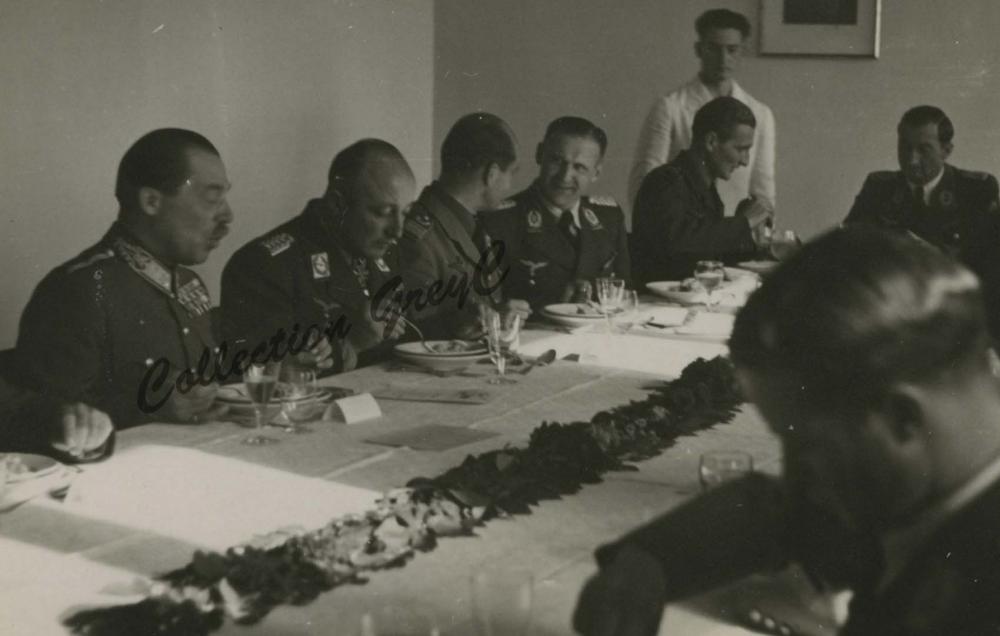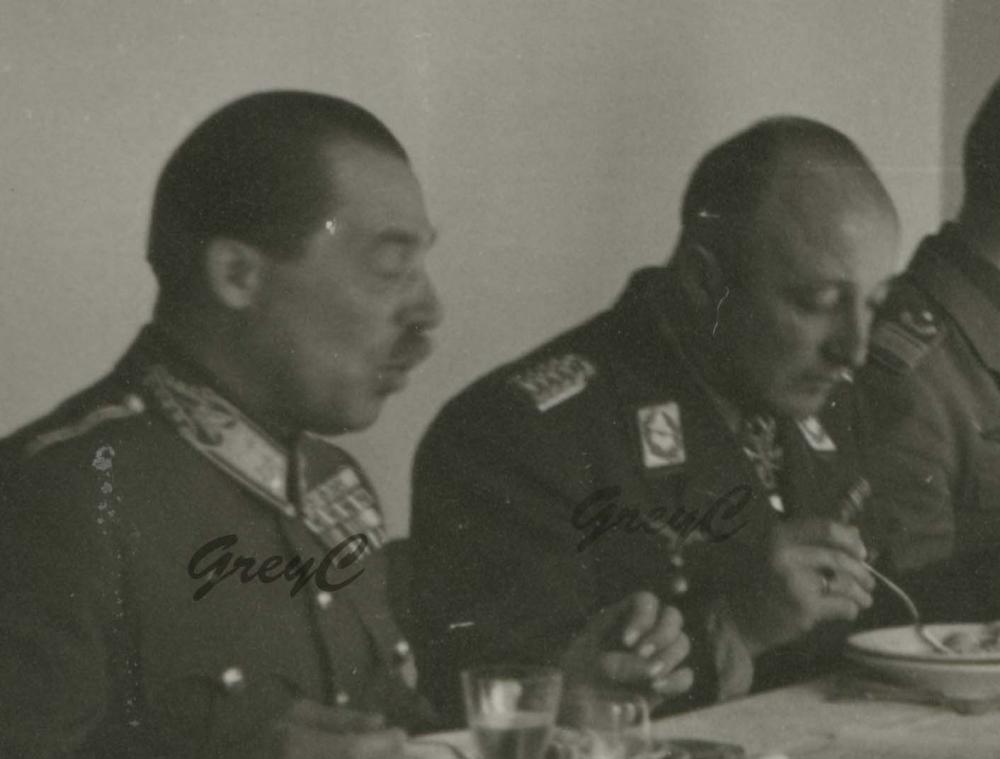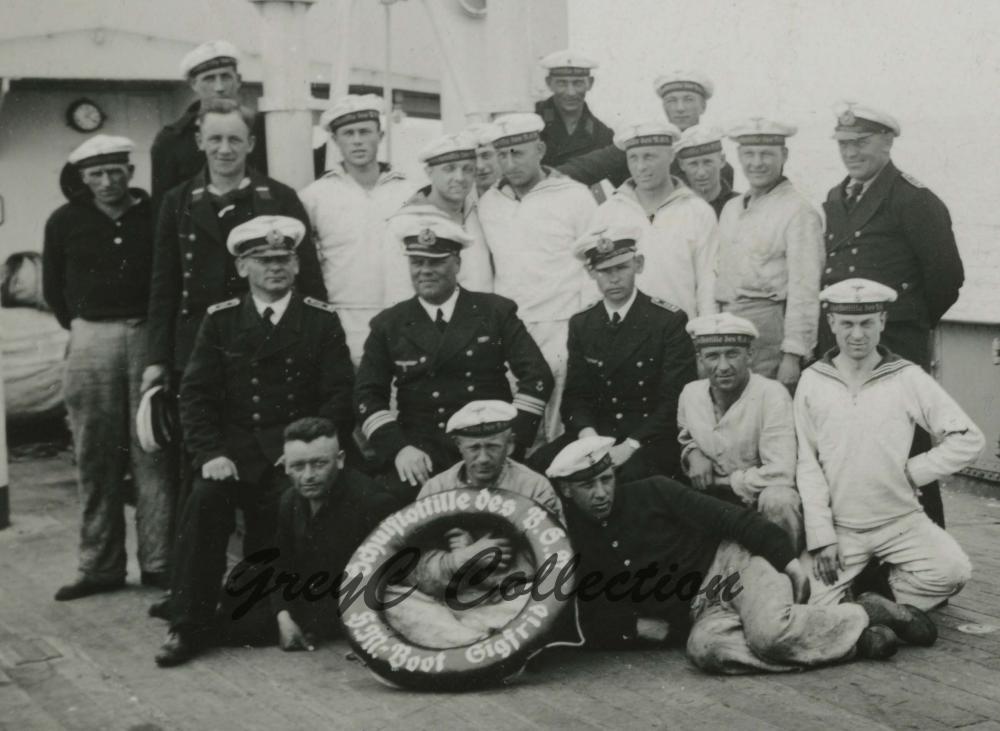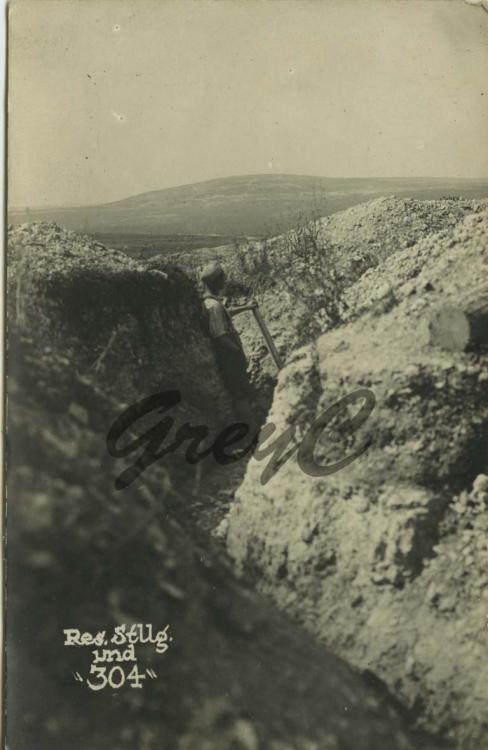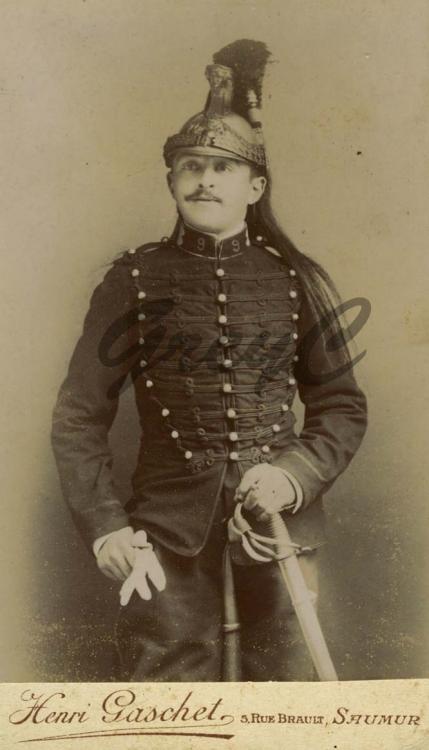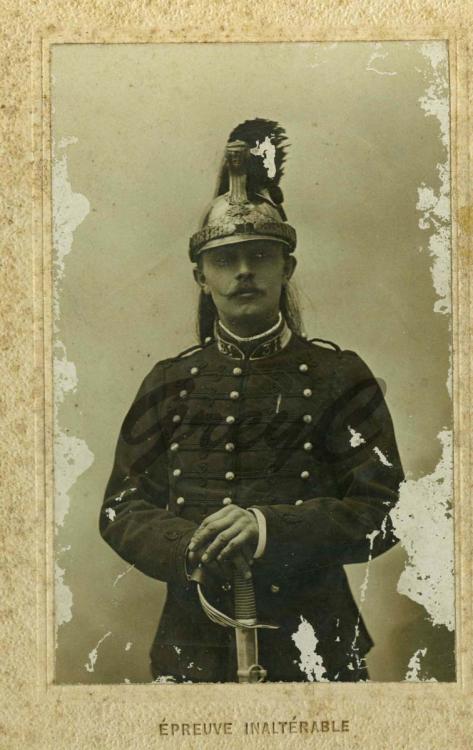-
Posts
923 -
Joined
-
Last visited
-
Days Won
6
Content Type
Profiles
Forums
Blogs
Gallery
Events
Store
Everything posted by GreyC
-
Good morning Gentlemen, after having posted this photo in a German forum to no avail, maybe here are forists who can help identifying these two generals having some soup. One is clearly from the Luftwaffe the other must be a German ally, but of what country and airforce? No other information available on this photo, I am afraid. Thank´s for your help. GreyC
-
Hi Jeff, this migt help further: http://littlegun.be/arme belge/artisans identifies e f/a fliegenshmidt gb.htm GreyC
-

What does M.I.R.S. stand for British Intelligence WW2?
GreyC replied to GreyC's topic in World War II 1939 to 1945
Good morning, it´s a pleasure. GreyC -

What does M.I.R.S. stand for British Intelligence WW2?
GreyC replied to GreyC's topic in World War II 1939 to 1945
Hi Trooper_D, what I could gather in a quick internet search is the following: The MIRS (Military Intelligence Service) was a joint Anglo-American agency with offices in Washington DC and London (Victoria Hotel), founded in May (other sources say January) 1943 under the supervision of Britain´s MI14 (Order of Battle German Forces) and the State´s G-2 (Assistent Chief of Staff). Shortly before the joint landing of British and US forces in North Africa. Its personnel was comprised mainly of German emmigrants to the US, its task was the analysis of captured German documents (150ts until 1945) and the dissemination of the knowledge gained through this. They had field agents who, especially directly after Germany´s surrender, discovered valuble documents in Germany that helped the allies prepare for the Nürnberg trials. GreyC Source e.g.: Germany and the 2nd WW, p. 306; Vol IX/II, Oxford 2014. -

What does M.I.R.S. stand for British Intelligence WW2?
GreyC replied to GreyC's topic in World War II 1939 to 1945
Hi Trooper_D, the hotel seems to have been in Northumberland Avenue, London. The document can be found here: http://wwii.germandocsinrussia.org/de/nodes/1850-akte-52-akte-nr-42-1943-der-2-verwaltung-der-hauptverwaltung-aufklarung-gru-der-roten-armee-gefechtsausbildung-und-erganzung-in-der-wehrmacht#page/194/mode/inspect/zoom/6 I chanced upon it in a different forum. GreyC -

What does M.I.R.S. stand for British Intelligence WW2?
GreyC replied to GreyC's topic in World War II 1939 to 1945
Hello Trooper_D, much appreciated! GreyC -
Hello, I came across a German document detailing execution procedures for Serbia. This document seems to have gotten into the hands of British intelligence, copied and given to the Russians in 1943. The British "address" was M.I.R.S., The War Office, Victoria Hotel, London. As far as I know this hotel was requisitioned from 1940 on by the War Office to house part of the SOE. So given the nature of the document the M.I.R.S. seems to be an intelligence gathering or producing agency. Can anybody of you tell me what the abbreviation stands for Military Intelligence... something? And what did it do? Thank you, GreyC
-
Good morning, SMS Endeavour was a survey vessel. 1,280t, launched 1912, armed with 1-3pdr, 13kts. Served in WW2, sold 1946. (British Warships 1914-1919) While your guy was on board it was commanded by Sidney Arthur Geary Hill, D.S.O., R.N. (5 August, 1881 – 18 March, 1953) (http://www.dreadnoughtproject.org/tfs/index.php/H.M.S._Endeavour_(1912)) GreyC
-
Good evening Gentlemen, having had a lot of fun watching you post cap tallies of the Kriegsmarine I have decided to join in, though my focus is on Imperial Forces / Navy. Here are some from the Befehshaber der Sicherung der Nordsee. As the unit and the boat might not generally be known here a few informations: Built 1915 as trawler ESTEBURG for Pickenpack, taken over by Imperial Navy Dec. 1915. 13th January 1917: 4. Minenflottillle 12. Halbflottille. 16th June1919 back to owners. 1936 bought by Kriegsmarine. 14th March 1937 named SIGFRID. 3rd July 1937 Hilfsminensuchboot. 1st. April 1939 BSN Schulflottille (Befehlshaber der Sicherung der Nordsee). Survived war after short British ownership back into German hands as trawler broken up 1952. (Gröner) GreyC
-
Hi, Text translates as: Franz und Heinz/Heinz sails on the steamer in the background now for the last weeks. Auf dem Dampfer im Hintergrund fährt Heinz jetzt die letzten Wochen. There are till today a Scharnhorstbrücke in Kiel and Wilhelmshaven. By the looks of it, and because the Schiffsartillerieschule was in Kiel, I guess the photo was taken there. Actually, they both function more as a pier than a bridge. GreyC
-
Good morning Bayern, thank you for the interesting details! GreyC
-
Merci beaucoup, monsieur! GreyC
-
Hello or better bonjour! I was able to buy some WW1 photos recently, among them these soldiers from what appears to be French cavalry before WW1? I am absolutely in the dark when it comes to French military, so I´d appreciate if anybody could enlighten my with regards to the unit and its garison, if different from town the photos were taken in. I believe the photos were taken in the 1890s or early 1900s? Thanks a lot! GreyC
-

Kaiserlische Heer and Marine units in Crimea in WW 1
GreyC replied to FRITZEL's topic in The Great War 1914 to 1918
Hi Fritzel, with regard to the Verlustlisten: not all wounded or dead were listed during the afore mentioned timespan. Especially navy casualties, but also army were sometimes reported with delay or not at all, so not to inform the enemy in instances of classified actions (like losses of submarines etc.). GreyC -
Hi, I read it not as a name but as "Meine" - "my" Gastgeber / hosts. Beneath the names Franz Jonas ,Frau Jonas, Klaus Jonas GreyC
-

Wilhelm Hobacher - info sought
GreyC replied to Cilli1902's topic in Wehrmacht Medals, Decorations & Awards
Hi Cilli1902, you could send an inquiry to the Vienna City Archive asking them to find his entry in the Gewerberegister, where the founding date and other information of the factory are written down in. In some instances the archives also kept a file with additional data. Another option is the Handelsregister with varying amounts of information, dependend on the legal type of the business (OHG, GmbH, AG) GreyC -
Hi there seems to have been a commemorative medal with the profil of his in 1917 and 1918: https://www.numisbids.com/n.php?p=lot&sid=922&lot=32119 and https://www.acsearch.info/search.html?similar=1304766 and he seems to hae been promoted to SA Brigadeführer in 1942 (or someone with the same name). http://www.linkfang.de/wiki/Liste_der_SA-Brigadeführer GreyC
-
Good evening gentlemen, the photo was taken between 1930 the earliest and prior to Aug 1939 but at that time still recent, as the General mailed a copy of it to the State Archiv then. The Generalleutnant a.D. was first listed a citizen of Weimar in 1931, however there is no address-book of 1930. So theoretically he could have lived there from late 1929/1930 onwards. See: https://www.deutsche-digitale-bibliothek.de/item/NPJFZIAVBVJSUZERB64TU22YYVAEATHJ GreyC


